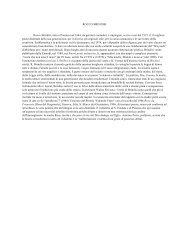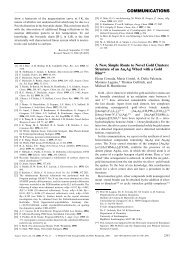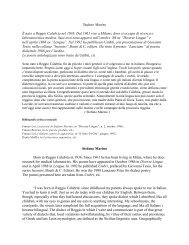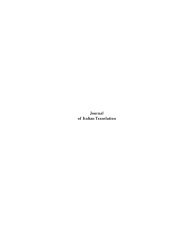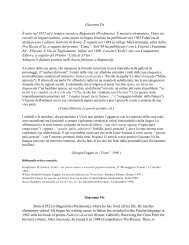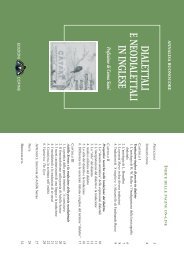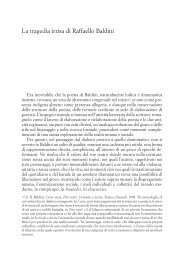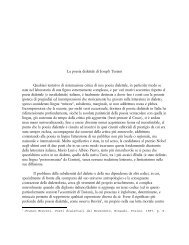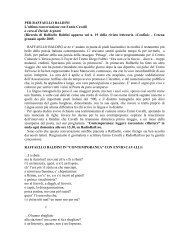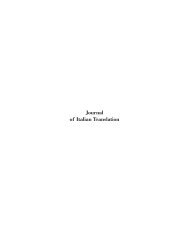Journal of Italian Translation
Journal of Italian Translation
Journal of Italian Translation
Create successful ePaper yourself
Turn your PDF publications into a flip-book with our unique Google optimized e-Paper software.
14<br />
<strong>Journal</strong> <strong>of</strong> <strong>Italian</strong> <strong>Translation</strong><br />
question. The straight and immediate answer that comes to my<br />
mind is that you really cannot translate Camilleri, if you expect to<br />
present an English-speaking Camilleri. But I would give the same<br />
answer to the question “how can you translate Dante, or Petrarch<br />
or Calvino?” Theorists <strong>of</strong> translation can tell you in two hundred<br />
pages or more that translation is an impossible task. The reality is,<br />
however, that translation has always been part <strong>of</strong> the literary world<br />
and it has been accomplished in various degrees <strong>of</strong> fidelity since<br />
the beginning <strong>of</strong> time. As a practicing translator I am more interested<br />
in the pragmatic aspect <strong>of</strong> translation that accomplishes every<br />
day something that presumably is impossible to do. Thus, it is<br />
true, Camilleri is impossible to translate, but I venture to say that<br />
his books will in fact be translated one after the other. Already the<br />
first translation has come out. It’s The Shape <strong>of</strong> Water, La forma<br />
dell’acqua, translated by Stephen Sartarelli and I understand that<br />
two more novels will be coming out in April. Many more <strong>of</strong><br />
Camilleri’s books have been translated into French and Spanish,<br />
although I have no data on these. I do have a copy <strong>of</strong> La forme de<br />
l’eau, by the French translator Serge Quadruppani and I have been<br />
comparing it to the English translation to see how the two approached<br />
the subject.<br />
As most <strong>of</strong> you know, If you have read any <strong>of</strong> Camilleri’s<br />
books, the problem <strong>of</strong> translation is complicated by the writer’s<br />
intentional interspersing <strong>of</strong> his text with Sicilian words or expressions<br />
camouflaged as <strong>Italian</strong> and his frequent use <strong>of</strong> Sicilian especially<br />
in dialogues. It is clear that the conscious use <strong>of</strong> dialect,<br />
whether in an undiluted form or camouflaged, transformed or even<br />
parodic, constitutes the most obvious element <strong>of</strong> this writer’s style.<br />
A translator faces three different challenges <strong>of</strong> various difficulties.<br />
The first is the fairly straight forward problem <strong>of</strong> translating <strong>Italian</strong><br />
into English which ought not create much <strong>of</strong> a problem; the<br />
second is the frequent use <strong>of</strong> the Sicilian language—notice I said<br />
language, not dialect—in dialogues with people who for one reason<br />
or another speak in that language. This too should not represent<br />
an unsurmountable difficulty since Sicilian is a language like<br />
all the others and as such can and is normally translated to English.<br />
The easiest way <strong>of</strong> translating these dialogues is to add a<br />
qualifying sentence that says these words word were spoken in<br />
Sicilian. Another way could be to translate the dialogues into slang<br />
or colloquial speech. The third and certainly the most difficult<br />
subtext to translate in Camilleri is his unpredictable and whimsi-



